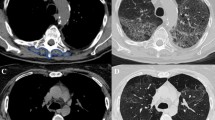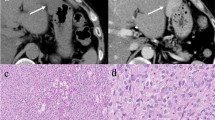Abstract
Purpose
A single-center study was conducted to investigate the impact of sarcopenia as a predictor for 90-day mortality (90 dM) and complications within 90 days after radical cystectomy for bladder cancer.
Methods
In total, 327 patients with preoperative available digital computed tomography (CT) scans of the abdomen and pelvis were identified. The lumbar skeletal muscle index was measured using preoperative abdominal CT to assess sarcopenia. Complications were recorded and graded according to Clavien–Dindo (CD). Predictors of 90 dM and complications within 90 days were analyzed by uni- and multivariable logistic regression.
Results
Of the 327 patients, 262 (80%) were male and 108 (33%) patients were classified as sarcopenic. Within 90 days, 28 (7.8%) patients died, of whom 15 patients were sarcopenic and 13 were not. In multivariable logistic regression analysis, sarcopenia (OR 2.59; 95% CI 1.13–5.95; p = 0.025), ASA 3–4 (OR 2.53; 95% CI 1.10–5.82; p = 0.029) and cM + (OR 7.43; 95% CI 2.34–23.64; p = 0.001) were independent predictors of 90-day mortality. Sarcopenic patients experienced significantly more complications, i.e., CD 4a–5 (p = 0.003), compared to non-sarcopenic patients. In multivariable logistic regression analysis, sarcopenia was independently associated with CD ≥ 3b complications corrected for age, BMI, ASA-Score and type of urinary diversion.
Conclusions
We reported that sarcopenia proved an independent predictor for 90 dM and complications in patients undergoing RC for bladder cancer.

Similar content being viewed by others
References
Stein JP et al (2001) Radical cystectomy in the treatment of invasive bladder cancer: long-term results in 1,054 patients. J Clin Oncol Off J Am Soc Clin Oncol 19(3):666–675
Madersbacher S et al (2003) Radical cystectomy for bladder cancer today—a homogeneous series without neoadjuvant therapy. J Clin Oncol Off J Am Soc Clin Oncol 21(4):690–696
Aziz A et al (2014) Prediction of 90-day mortality after radical cystectomy for bladder cancer in a prospective European multicenter cohort. Eur Urol 66(1):156–163
Afshar M et al (2018) Centralisation of radical cystectomies for bladder cancer in England, a decade on from the ‘Improving Outcomes Guidance’: the case for super centralisation. BJU Int 121(2):217–224
Dell’Oglio P et al (2017) Short-form Charlson Comorbidity index for assessment of perioperative mortality after radical cystectomy. J Natl Compr Cancer Netw 15(3):327–333
Novotny V et al (2016) Age, American Society of Anesthesiologists physical status classification and Charlson score are independent predictors of 90-day mortality after radical cystectomy. World J Urol 34(8):1123–1129
Mayr R et al (2012) Predictive capacity of four comorbidity indices estimating perioperative mortality after radical cystectomy for urothelial carcinoma of the bladder. BJU Int 110:E222–E227
Boorjian SA et al (2013) Comparative performance of comorbidity indices for estimating perioperative and 5-year all cause mortality following radical cystectomy for bladder cancer. J Urol 190:55–60
Martin L et al (2013) Cancer cachexia in the age of obesity: skeletal muscle depletion is a powerful prognostic factor, independent of body mass index. J Clin Oncol 31(12):1539–1547
Psutka SP et al (2014) Sarcopenia in patients with bladder cancer undergoing radical cystectomy: impact on cancer-specific and all-cause mortality. Cancer 120(18):2910–2918
Smith AB et al (2014) Sarcopenia as a predictor of complications and survival following radical cystectomy. J Urol 191(6):1714–1720
Hirasawa Y et al (2016) Sarcopenia as a novel preoperative prognostic predictor for survival in patients with bladder cancer undergoing radical cystectomy. Ann Surg Oncol 23(Suppl 5):1048–1054
Wan F et al (2014) Lower skeletal muscle index and early complications in patients undergoing radical cystectomy for bladder cancer. World J Surg Oncol 12:14
Sobin LH, Gospodarowicz MK, Wittekind C (2010) International Union against Cancer. TNM classification of malignant tumours. Wiley-Blackwell, W. Sussex
Dindo D, Demartines N, Clavien PA (2004) Classification of surgical complications: a new proposal with evaluation in a cohort of 6336 patients and results of a survey. Ann Surg 240(2):205–213
Reisinger KW et al (2014) Functional compromise reflected by sarcopenia, frailty, and nutritional depletion predicts adverse postoperative outcome after colorectal cancer surgery. Ann Surg 261:345–352
Peduzzi P et al (1996) A simulation study of the number of events per variable in logistic regression analysis. J Clin Epidemiol 49(12):1373–1379
Sabel MS et al (2011) Sarcopenia as a prognostic factor among patients with stage III melanoma. Ann Surg Oncol 18(13):3579–3585
Mayr R et al. (2018) Sarcopenia as a comorbidity-independent predictor of survival following radical cystectomy for bladder cancer. J Cachexia Sarcopenia Muscle
Saitoh-Maeda Y et al (2017) A low psoas muscle volume correlates with a longer hospitalization after radical cystectomy. BMC Urol 17(1):87
Fearon K et al (2011) Definition and classification of cancer cachexia: an international consensus. Lancet Oncol 12(5):489–495
Fairey A et al (2008) Associations among age, comorbidity and clinical outcomes after radical cystectomy: results from the Alberta Urology Institute radical cystectomy database. J Urol 180(1):128–134
Pycha A et al (2008) Comparison of complications in three incontinent urinary diversions. Eur Urol 54(4):825–832
Yong C, Daihui C, Bo Z (2017) Laparoscopic versus open radical cystectomy for patients with bladder cancer over 75-year-old: a prospective randomized controlled trial. Oncotarget 8(16):26565–26572
Cruz-Jentoft AJ et al (2010) Sarcopenia: European consensus on definition and diagnosis: Report of the European Working Group on Sarcopenia in Older People. Age Ageing 39(4):412–423
Morley JE et al (2010) Nutritional recommendations for the management of sarcopenia. J Am Med Dir Assoc 11(6):391–396
Peterson MD, Sen A, Gordon PM (2011) Influence of resistance exercise on lean body mass in aging adults: a meta-analysis. Med Sci Sports Exerc 43(2):249–258
Fukuda Y et al (2016) Sarcopenia is associated with severe postoperative complications in elderly gastric cancer patients undergoing gastrectomy. Gastric Cancer 19(3):986–993
Yamamoto K et al (2016) Effectiveness of a preoperative exercise and nutritional support program for elderly sarcopenic patients with gastric cancer. Gastric Cancer 20:913–918
Burger M, Mulders P, Witjes W (2012) Use of neoadjuvant chemotherapy for muscle-invasive bladder cancer is low among major European centres: results of a feasibility questionnaire. Eur Urol 61(5):1070–1071
Author information
Authors and Affiliations
Contributions
RM: Project development, data collection, data analysis, manuscript writing. HF: Project development, data collection, manuscript writing. FZ: Data analysis, manuscript writing, editing. MR: Data collection. LS: Data collection. CN: Data collection, protocol development. AP: Project development, manuscript writing. BWGR: Manuscript writing, data analysis, editing. MB: Supervision, manuscript writing. MG: Data collection, manuscript writing, editing.
Corresponding author
Ethics declarations
Conflict of interest
The authors declare that they have no conflict of interest.
Ethical approval
All procedures performed in studies involving human participants were in accordance with the ethical standards of the institutional and/or national research committee and with the 1964 Helsinki Declaration and its later amendments or comparable ethical standards.
Rights and permissions
About this article
Cite this article
Mayr, R., Fritsche, HM., Zeman, F. et al. Sarcopenia predicts 90-day mortality and postoperative complications after radical cystectomy for bladder cancer. World J Urol 36, 1201–1207 (2018). https://doi.org/10.1007/s00345-018-2259-x
Received:
Accepted:
Published:
Issue Date:
DOI: https://doi.org/10.1007/s00345-018-2259-x




